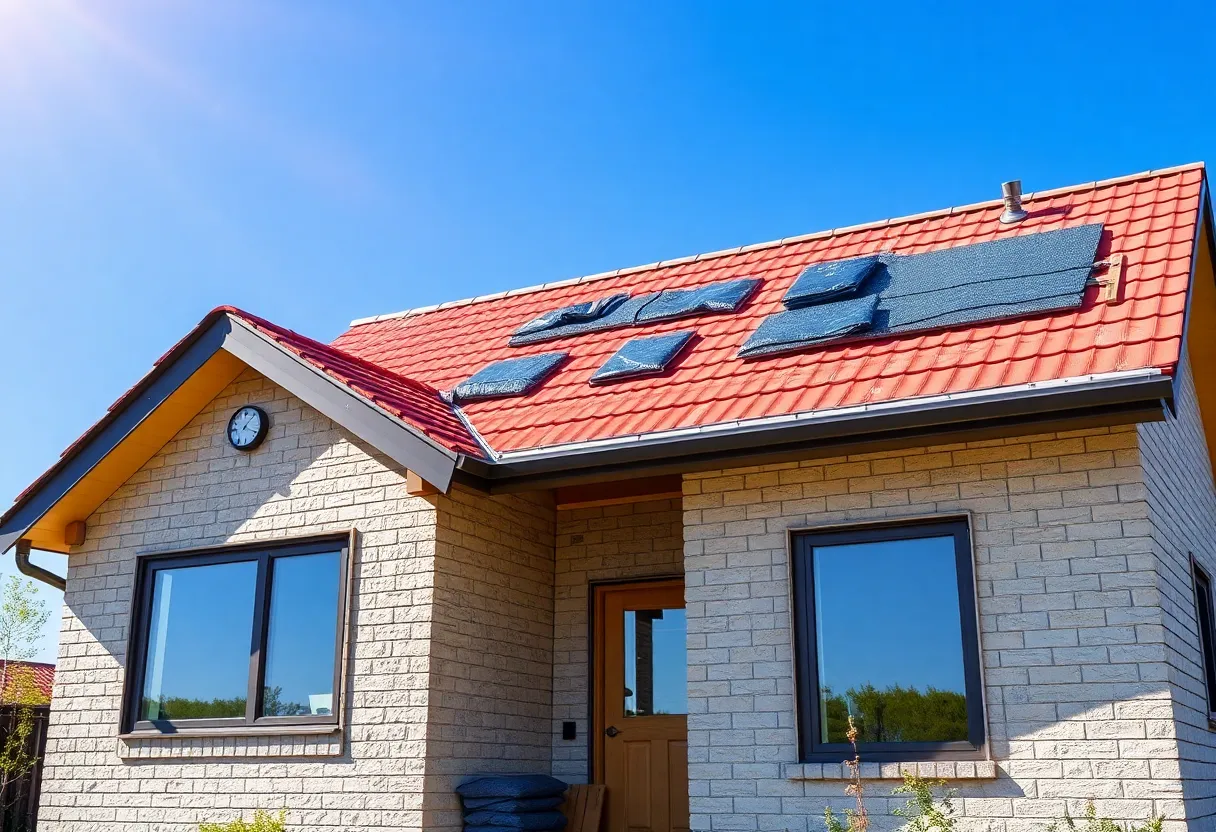How to Choose the Right Insulation for Your Roof: Tips for Energy Efficiency
Understanding the Importance of Roof Insulation
Roof insulation plays a critical role in maintaining energy efficiency in any building. Proper insulation helps regulate temperature, keeping homes warmer in winter and cooler in summer. It reduces the workload on heating and cooling systems, ultimately lowering energy bills. Moreover, it contributes to *environmental sustainability* by decreasing energy consumption and reducing greenhouse gas emissions.
Types of Roof Insulation
There are several types of insulation materials suitable for roofing systems. Each has unique properties, advantages, and applications. Understanding these options is essential for making an informed decision.
Fiberglass Insulation
Fiberglass insulation is one of the most common materials used. It consists of fine glass fibers trapped in a matrix to create a lightweight, effective insulation layer. This type of insulation is available in batts, rolls, and blown-in varieties.
– **Advantages**:
– Excellent thermal resistance (R-value)
– Non-combustible
– Cost-effective
– **Considerations**:
– Requires proper installation to avoid air leaks
– Can be affected by moisture
Foam Board Insulation
Foam board insulation provides a solid panel of insulation, typically made from polystyrene or polyisocyanurate. It’s especially useful in flat roof applications.
– **Advantages**:
– High R-value per inch
– Resistant to moisture
– Lightweight and easy to handle
– **Considerations**:
– Requires sealing to prevent air infiltration
– Higher initial cost than fiberglass
Spray Foam Insulation
Spray foam insulation involves applying a liquid foam that expands upon contact with surfaces, filling gaps and cracks. This type is ideal for irregular spaces.
– **Advantages**:
– Superior air sealing capabilities
– High R-value
– Can help with noise reduction
– **Considerations**:
– Higher installation costs
– Requires professional installation
Cellulose Insulation
Cellulose insulation is made from recycled paper products treated with fire retardants. It’s often used in attics and other roof spaces.
– **Advantages**:
– Environmentally friendly
– Good thermal performance
– Effective at reducing noise
– **Considerations**:
– Can settle over time, reducing its effectiveness
– Requires careful installation to avoid moisture problems
Key Factors to Consider When Choosing Insulation
Selecting the right insulation for your roof involves considering several key factors:
1. R-Value
The R-value measures an insulation material’s thermal resistance. Higher R-values indicate better insulation performance. When selecting insulation, consider your local climate and the recommended R-value for your area. Generally, colder climates require higher R-values.
2. Moisture Resistance
Moisture can significantly impact the effectiveness of insulation. Insulation materials vary in their moisture resistance. For areas prone to humidity, select materials that discourage mold and mildew growth to maintain efficacy.
3. Installation Method
Different insulation types require varying installation techniques. Choose a method that aligns with your skillset and the complexity of the installation area. If opting for professional installation, ensure the contractor is experienced with the chosen insulation type.
4. Budget
While the upfront cost is essential, consider the long-term savings on energy bills. Sometimes, investing in a higher-quality insulation can yield substantial savings over time. Calculate the return on investment (ROI) based on energy savings and the insulation’s longevity.
5. Local Building Codes
Review any local building codes or regulations concerning insulation materials and installation. Compliance ensures safety and can prevent potential issues during inspections.
Energy Efficiency Benefits of Proper Insulation
Proper roof insulation significantly enhances energy efficiency. Below are key benefits underlining its importance:
1. Reduced Energy Bills
With effective insulation, your heating and cooling systems work more efficiently. This leads to noticeable savings on energy bills, which can recoup the investment in insulation over time.
2. Increased Comfort
Adequate insulation helps maintain a consistent indoor temperature. This results in greater comfort throughout the year by preventing drafts and eliminating hot or cold spots.
3. Extended Roof Lifespan
Insulation helps regulate temperature fluctuations within the roof structure, reducing stress and wear. This could prolong the lifespan of roofing materials and decrease the frequency of repairs or replacements.
4. Environmental Impact
Improved energy efficiency reduces the carbon footprint of your home. Efficient insulation contributes to lower demand for energy resources, thereby benefitting the environment.
Installation Tips for Roof Insulation
Once you’ve chosen the right insulation material, proper installation is essential for maximizing its benefits. Here are some helpful installation tips:
1. Air Sealing
Before installation, perform air sealing to minimize drafts. Use caulk or spray foam to seal any openings or gaps around vents and pipes. This ensures that conditioned air stays within the home.
2. Proper Ventilation
Adequate ventilation is essential to prevent moisture buildup in attics, which can lead to mold growth. Ensure appropriate venting before applying insulation. This might include roof vents, gable vents, or soffit vents.
3. Measurement and Cutting
Accurate measurements are key to effective installation. Carefully cut insulation materials to fit snugly without compression. Compression can reduce R-value and overall performance.
4. Layering Insulation
When using different types of insulation, consider layering them for enhanced performance. For example, you can pair rigid foam board with fiberglass batts for additional thermal resistance.
5. Regular Inspections
Finally, conduct regular inspections of your insulation to monitor its condition. Look for any signs of damage, moisture intrusion, or settling that may compromise its effectiveness.
Conclusion
Choosing the right insulation for your roof is crucial to achieving energy efficiency. Understanding the various types of insulation, considering key factors, and ensuring quality installation can lead to significant long-term benefits. An informed choice not only enhances comfort but also promotes sustainability and reduces energy costs.
Investing the time and effort into selecting the right insulation will result in a more efficient, cost-effective, and environmentally friendly living space.






